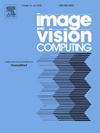De-noising mask transformer for referring image segmentation
IF 4.2
3区 计算机科学
Q2 COMPUTER SCIENCE, ARTIFICIAL INTELLIGENCE
引用次数: 0
Abstract
Referring Image Segmentation (RIS) is a challenging computer vision task that involves identifying and segmenting specific objects in an image based on a natural language description. Unlike conventional segmentation methodologies, RIS needs to bridge the gap between visual and linguistic modalities to exert the semantic information provided by natural language. Most existing RIS approaches are confronted with the common issue that the intermediate predicted target region also participates in the later feature generation and parameter updating. Then the wrong prediction, especially occurs in the early training stage, will bring the gradient misleading and ultimately affect the training stability. To tackle this issue, we propose de-noising mask (DNM) transformer to fuse the cross-modal integration, a novel framework to replace the cross-attention by DNM-attention in traditional transformer. Furthermore, two kinds of DNM-attention, named mask-DNM and cluster-DNM, are proposed, where noisy ground truth information is adopted to guide the attention mechanism to produce accurate object queries, i.e., de-nosing query. Thus, DNM-attention leverages noisy ground truth information to guide the attention mechanism to produce additional de-nosing queries, which effectively avoids the gradient misleading. Experimental results show that the DNM transformer improves the performance of RIS and outperforms most existing RIS approaches on three benchmarks.
求助全文
约1分钟内获得全文
求助全文
来源期刊

Image and Vision Computing
工程技术-工程:电子与电气
CiteScore
8.50
自引率
8.50%
发文量
143
审稿时长
7.8 months
期刊介绍:
Image and Vision Computing has as a primary aim the provision of an effective medium of interchange for the results of high quality theoretical and applied research fundamental to all aspects of image interpretation and computer vision. The journal publishes work that proposes new image interpretation and computer vision methodology or addresses the application of such methods to real world scenes. It seeks to strengthen a deeper understanding in the discipline by encouraging the quantitative comparison and performance evaluation of the proposed methodology. The coverage includes: image interpretation, scene modelling, object recognition and tracking, shape analysis, monitoring and surveillance, active vision and robotic systems, SLAM, biologically-inspired computer vision, motion analysis, stereo vision, document image understanding, character and handwritten text recognition, face and gesture recognition, biometrics, vision-based human-computer interaction, human activity and behavior understanding, data fusion from multiple sensor inputs, image databases.
 求助内容:
求助内容: 应助结果提醒方式:
应助结果提醒方式:


